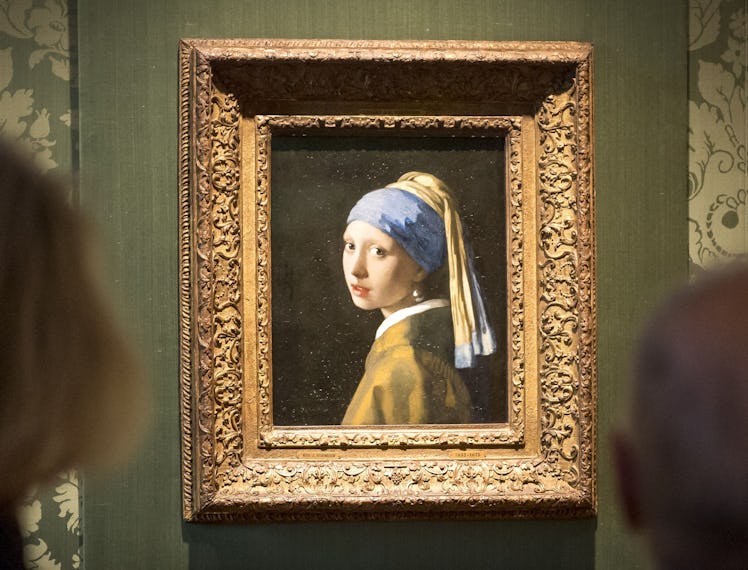Activists, Drop the Tomato Sauce and Step Away From the Timeless Art

Don’t drag Girl With a Pearl Earring into this; she’s been through enough (haven’t you watched the Scarlett Johansson movie?). On Thursday, October 27, Johannes Vermeer’s famous portrait became the latest pawn in climate change activists’ demonstrations when two people superglued themselves to the painting and “a liquid was thrown,” according to a statement from the Mauritshuis museum in The Hague, where the painting resides.
The activists wore shirts that read “Just Stop Oil” as one of them glued their head to the painting, while the other glued his hand next to the frame. They then joined the trend of throwing foodstuffs at art by adding what looked to be tomato sauce into the mix. In a video of the incident, you can hear one of the activist’s pleas amid of chorus of shaming.
“How do you feel when you see something beautiful and priceless being apparently destroyed before your eyes?” he asked. “Do you feel outrage? Good. Where is that feeling when you see the planet being destroyed before our very eyes?”
The Vermeer moment marks the third recent incident of climate change activists involving art (and food) in their protests. Earlier this month, Vincent Van Gogh’s Sunflowers was decorated with a splatter of tomato soup, and just a week later, Claude Monet’s Haystacks also faced the can along with a handful of mashed potatoes. In all of these incidents, each of the paintings was protected by a pane of glass and was not harmed. According to a group called “Just Stop Oil,” which was behind the most recent incident, these attacks have not been coordinated, although one can assume they’ve inspired each other.
Though it has seemingly become a trend, the use of art in protests is nothing new. Art has found itself unwittingly at the whim of activists for hundreds of years, destroyed in protest against things like the Hapsburgs back in the 16th century, or the lack of women’s rights in the early 20th century. It’s unclear how the public reacted when Catholic art was smashed throughout Europe in the 1500s, but today’s protests do not seem to be particularly effective at gaining support. These acts (possibly unintentionally) force the public to choose between a very valid cause and a timeless work of art. The point these activists are trying to make is clear. They want to show that the planet is as defenseless as a painting getting drenched in soup, that the earth is worth more than this art, and that we should be as unsettled about its demise as we are about the Haystacks’ vandalism. Human nature, however, has won, and in general, the public’s response has fallen more on the side of concern for the art, with little conversation about the planet. While, again, the pieces have not been permanently harmed, their museums have been forced to take the works down following the attacks to assess the damage, which is unfortunate for the people who traveled from across the globe to see the art in person.
On Twitter, it seems like more people are making jokes about the incidents than saying, “Ah, they have a point.” Of course, one would have to look into the extensive history of protests to contextualize the current response to these acts. It’s quite possible that activists who take such extreme actions have never been applauded by the public; we won’t pretend to know that history. But it’s also possible that getting art involved hasn’t proven to be effective. As Slate pointed out, suffragists continuously attacked paintings across England in 1913, yet women weren’t granted full voting equality until 15 years later.
Will these attacks stop? Likely not. They’re getting attention, and, in the end, that’s a large part of the goal. The activists seem to be doing their research and choosing pieces they know are covered by glass so as to not permanently destroy any of this invaluable art. Still, it could be just a matter of time before they escalate matters and go for a less-protected piece, or before someone goes rogue and does some permanent damage. Perhaps they could frame such a situation as part of the point they’re trying to make, but that would just leave us with a forever-ruined work of art and a still-dying planet. Climate change is real, and we need to take action to stop it. We agree wholeheartedly—but please just leave the pretty pictures alone.